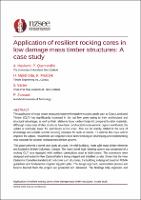| dc.contributor.author | Hashemi, Ashkan | |
| dc.contributor.author | Mpidi Bita, Hercend | |
| dc.contributor.author | Zarnani, Pouyan | |
| dc.contributor.author | Malczyk, Robert | |
| dc.contributor.author | Quenneville, Pierre | |
| dc.contributor.author | Varier, Sriraj | |
| dc.date.accessioned | 2023-02-21T01:18:03Z | |
| dc.date.available | 2023-02-21T01:18:03Z | |
| dc.date.issued | 2022-04-27 | |
| dc.identifier.uri | https://repo.nzsee.org.nz/xmlui/handle/nzsee/2467 | |
| dc.description.abstract | The application of mass timber structures made with massive wooden panels such as Cross Laminated Timber (CLT) has significantly increased in the last few years owing to their many architectural and structural advantages, as well as their relatively lower carbon footprint compared to other materials. Although many mass timber structures have been constructed in non-seismic regions worldwide, the uptake is relatively lower for seismically active areas. This can be mainly related to the lack of knowledge and reliable lateral load resisting concepts for such structures. To address this issue and to improve the uptake, researchers and engineers have been working on developing and implementing new concepts for seismic resistant mass timber systems. This paper presents a novel case study structure, the ON5 building, made with mass timber elements. For this building is located in British Columbia, Canada, CLT panels are used for floors and walls. The main lateral load resisting system was comprised of a rocking CLT core equipped with resilient connections used as hold-downs. The connectors were designed and tested in New Zealand before being shipped and installed on-site. Given that the New Zealand or Canadian standards do not cover such structures, the building is designed based on FEMA guidelines and fundamental engineering principles. The design approach, construction process and lessons learned from the project are presented and discussed. The findings help engineers and researchers better understand the behaviour of low damage mass timber structures and make them able to perform efficient and optimised designs for such structural systems. | |
| dc.language.iso | en | |
| dc.publisher | New Zealand Society for Earthquake Engineering | |
| dc.relation.ispartofseries | 2022;11 | |
| dc.subject | Advancements in structural and geotechnical design and assessment | |
| dc.subject | Case studies of achieving building resilience while accounting for uncertainties | |
| dc.subject | Case studies or research of integrating sustainable engineering | |
| dc.title | Application of resilient rocking cores in low damage mass timber structures: A case study | |
| dc.type | Article | |

